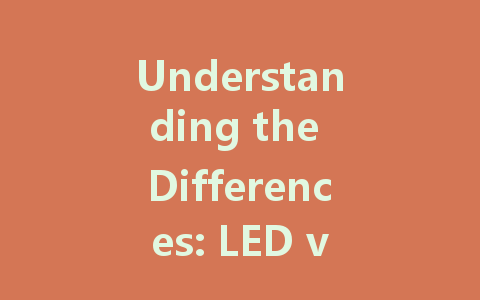
In today’s digital age, screens are an integral part of our lives. Whether you’re watching your favorite series, working on a project, or playing video games, the type of screen can significantly influence your experience. Two common types of screens you may encounter are LED (Light Emitting Diode) and LCD (Liquid Crystal Display). This article will parse through the vital aspects, advantages, and disadvantages of these two popular screen technologies, helping you make an informed choice suitable for your needs.
What is an LCD Screen?
LCD stands for Liquid Crystal Display. It utilizes liquid crystals in combination with a backlight to display images. The screen consists of multiple layers, including a layer of liquid crystals sandwiched between two polarizing filters. When an electric current is applied to the liquid crystals, they twist to either block or allow light to pass through, creating images on the screen.
Advantages of LCD Screens
Disadvantages of LCD Screens
What is an LED Screen?
LED screens actually fall under the category of LCD screens, as they utilize liquid crystal displays with LED backlighting. In contrast to traditional LCD screens, which typically use fluorescent lamps for backlighting, LED screens use light-emitting diodes, which contribute to the overall picture quality and energy efficiency.
Advantages of LED Screens
Disadvantages of LED Screens
LED vs. LCD: Key Differences
Technology
While both LED and LCD utilize liquid crystals for displaying images, the key difference lies in the backlighting technology. Traditional LCDs use CCFL (Cold Cathode Fluorescent Lamp), while LED screens use light-emitting diodes. This essential difference impacts various characteristics of the displays, including brightness, contrast, and energy consumption.
Energy Consumption
LED screens are more energy-efficient compared to traditional LCDs. This factor can contribute to savings on electricity bills over time, especially if you use your screen frequently.
Image Quality
LED screens generally offer superior image quality with better brightness and contrast, resulting in sharper, more vibrant images. For movie enthusiasts and gamers, this can greatly enhance the viewing experience.
Choosing the Right Screen for You
When deciding between an LED and an LCD screen, consider how you will use it. If you’re primarily using the screen for basic tasks like browsing the internet or word processing, a standard LCD may suffice. However, for gaming, movie-watching, or professional graphics work, investing in an LED screen is likely worth it for the enhanced picture quality and energy efficiency.
Conclusion
Understanding the differences between LED and LCD screens can significantly influence your purchasing decision. While both technologies have their advantages and disadvantages, the choice ultimately depends on your specific needs and preferences. LED screens may provide better image quality and energy efficiency, making them a popular choice for entertainment and professional use. Conversely, if budget is a primary concern, traditional LCD screens can still offer good performance for everyday tasks. Whichever option you choose, knowing what each technology offers ensures you make a more informed decision that suits your lifestyle.